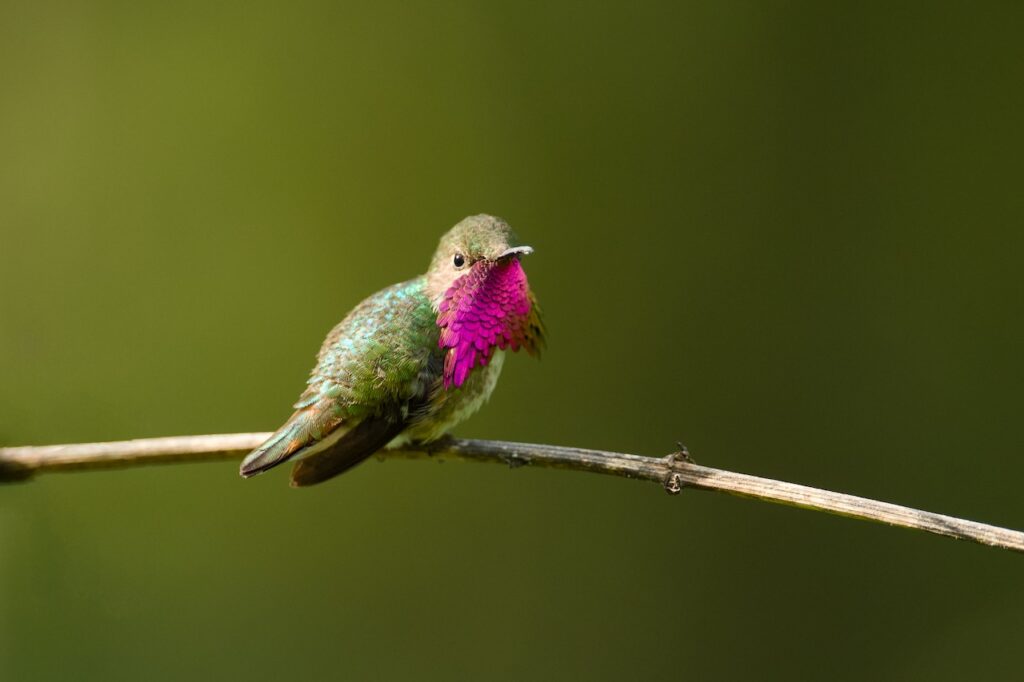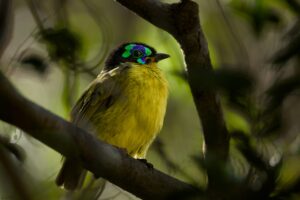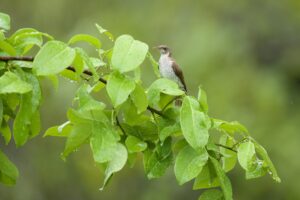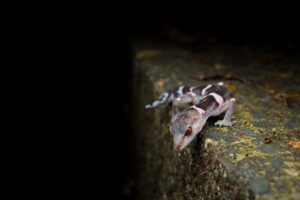On my recent trip to Guatemala, I had the incredible opportunity to observe one of the country’s smallest and most captivating birds—the Wine-throated Hummingbird (Selasphorus ellioti). Known for its stunning pink throat, this tiny creature performs an enchanting display to attract females during the breeding season. In this post, I’ll introduce you to the fascinating characteristics, habitat, and behavior of the Wine-throated Hummingbird, as well as its importance in Guatemala’s unique ecosystem.
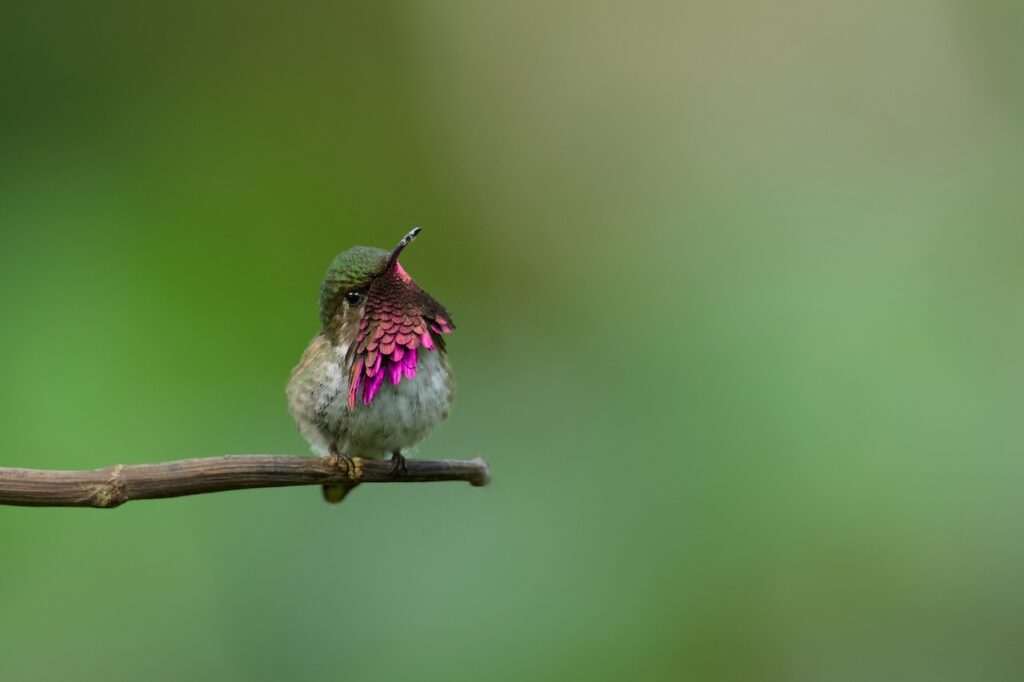
1. The Wine-throated Hummingbird’s Stunning Pink Throat
One of the most distinctive features of the Wine-throated Hummingbird is its vibrant pink throat, which changes color depending on the angle of the light. This phenomenon, known as structural color, allows the bird’s throat to shine brightly in a beautiful pink hue, sometimes even appearing reddish or violet. This eye-catching display plays a crucial role in communication between males and females, especially during the mating season.
2. Where Does the Wine-throated Hummingbird Live?
This tiny hummingbird is found only in the highlands of Guatemala, Mexico, Honduras, and a few surrounding regions. It thrives at altitudes ranging from 1,500 to 3,500 meters (4,900 to 11,500 feet), inhabiting humid pine-oak forests and evergreen forests. Due to its preference for these specific ecosystems, it is considered quite a rare bird to spot, making it a true gem for birdwatchers.
3. The Fascinating Display at Lekking Sites
During the breeding season, the male Wine-throated Hummingbird performs an elaborate display at what is known as a lekking site. These areas are where multiple males gather to showcase their impressive colors and aerial skills to attract females. The males position themselves under the bright sun to ensure their pink throats shimmer and catch the attention of nearby females.
However, these displays aren’t easy. The high-altitude environment and intense competition make it a life-risking performance. Males must exert extreme effort to maintain their dazzling shows, all in the hopes of impressing a mate.

4. Feeding and Diet: What Does This Tiny Hummingbird Eat?
Despite its small size, the Wine-throated Hummingbird is a dedicated feeder. It primarily consumes nectar from a variety of flowers, favoring the low to middle levels of vegetation. It’s a common sight to see it hovering in mid-air, expertly sipping nectar from blossoms. Like other hummingbirds, it also feeds on small insects, which provide an additional source of protein.
5. Breeding Behavior: High-Energy Displays for Mating Success
The breeding behavior of the Wine-throated Hummingbird is nothing short of fascinating. During the lekking period, males compete with each other to impress the females. Though little is known about their nesting habits, it is believed that the breeding season lasts from August to February. The display itself is a highly demanding physical performance, requiring the males to exert a significant amount of energy to perform their life-risking aerial acrobatics.
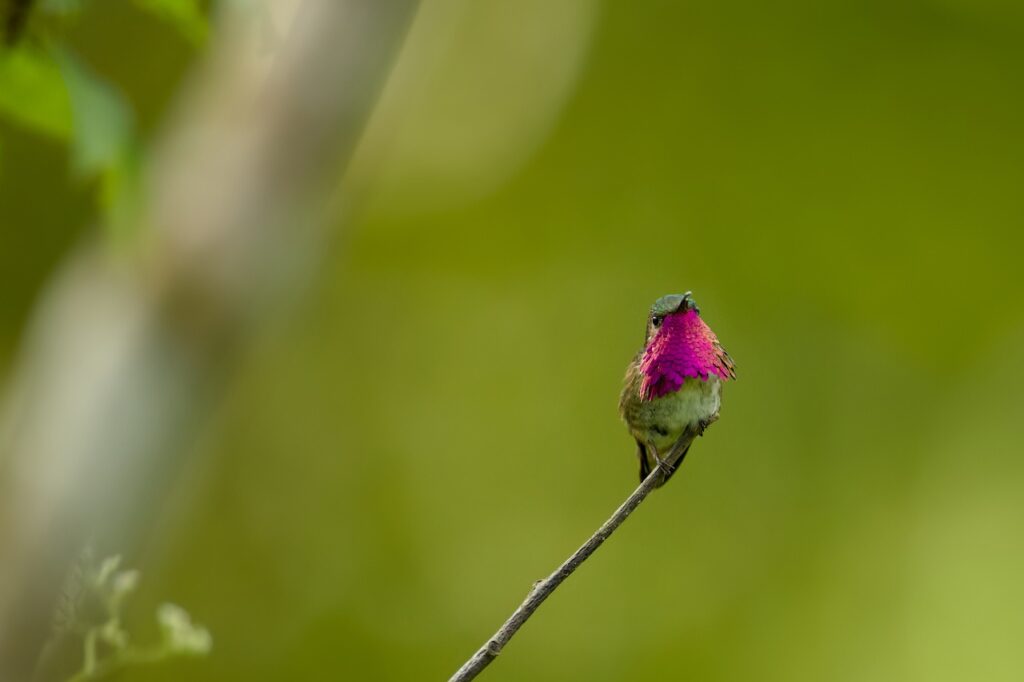
6. Conservation Status: A Rare Bird in Decline
The Wine-throated Hummingbird is currently listed as Least Concern by the IUCN. However, the species is facing significant challenges due to habitat destruction and deforestation, particularly in Guatemala. The clearing of highland forests for agriculture and grazing poses a serious threat to this delicate species. As a result, the bird’s population is declining in certain areas, and conservation efforts are crucial to its survival.
Conclusion: A Birdwatcher’s Dream
The Wine-throated Hummingbird is an incredibly rare and beautiful species, found only in limited regions. Its dazzling displays, unique feeding habits, and high-altitude lifestyle make it a dream subject for birdwatchers around the world. If you ever find yourself in Guatemala, make sure to seek out this stunning bird and witness its breathtaking performance firsthand.
